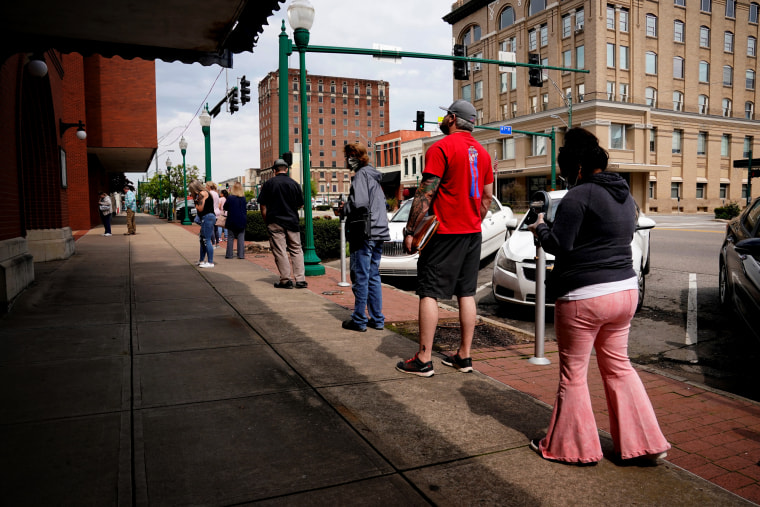Two weeks after tens of millions of unemployed Americans lost their $600-per-week federal supplement, Donald Trump announced over the weekend that his new plan will "take care of, pretty much, this entire situation."
It'd be great if that were true. But after just one full weekday, the president's solution already appears to be unraveling.
The White House plan is a little convoluted, but it'd work like this: Trump intends to send the jobless $400 per week -- with money he's borrowing from FEMA -- but the federal government's share will only be $300 per week (half of the benefit from the original CARES Act). The rest, according to the president, will need to come from states.
Yesterday, after governors got a good look at the plan, they were largely in agreement on one thing: they don't have the money.
President Donald Trump is calling on states to provide 25 percent of the expanded unemployment benefit his recently signed executive order calls for. But in states facing significant budget shortfalls because of the coronavirus pandemic, governors say the idea that they can pitch in for a quarter of the expanded benefits for the foreseeable future is misguided.
Kentucky Gov. Andy Beshear (D) noted that Trump's plan would cost his state an additional $1.5 billion between now and year's end. "It's not workable in its current form," the governor said. "It's something virtually no state can afford."
NBC News yesterday obtained a memo in which the federal Department of Labor offered states an alternative approach: they could apply existing state-based unemployment benefits toward their share of Trump's goal. But the obvious problem with this is that it would leave millions of struggling Americans -- who lost their jobs through no fault of their own -- much worse off.
The Republican insisted over the weekend this would not be "a hardship" for struggling families, though he failed to explain why not.
Complicating matters, it's not all clear if the scheme -- raiding FEMA's budget, telling states to pony up money they don't have -- is legal.
In case that weren't quite enough, according to the fine print in the presidential memorandum, Trump isn't just continuing an existing program; the White House intends to establish a new "lost wages assistance program." And creating new federal benefits programs takes time.
Penny Ickes, a spokesperson for the Pennsylvania Department of Labor and Industry, told NBC News in a statement that the new program "would have to be created from scratch and run parallel with Pennsylvania's existing unemployment benefits programs. This is not something that any state will be able to do quickly."
Meanwhile, the White House intends to draw upon a limited pool of money to pay for these benefits. What would happen once those funds are exhausted? No one has any idea, but we'd probably be right back to where we are today.
Michele Evermore, a senior policy analyst with the National Employment Law Project, told Politico, "I honestly think this can't possibly be serious. The White House must have released this thinking that this is just a negotiating tactic because it really is an empty promise."
As for when the unemployed can expect to see the aid they need, the process could take months. White House Press Secretary Kayleigh McEnany conceded yesterday, "I can't pinpoint a timeline."
No, of course not.
Remember, the president asked the public to believe his gambit will "take care of, pretty much, this entire situation." Those who believed him will soon be bitterly disappointed.

